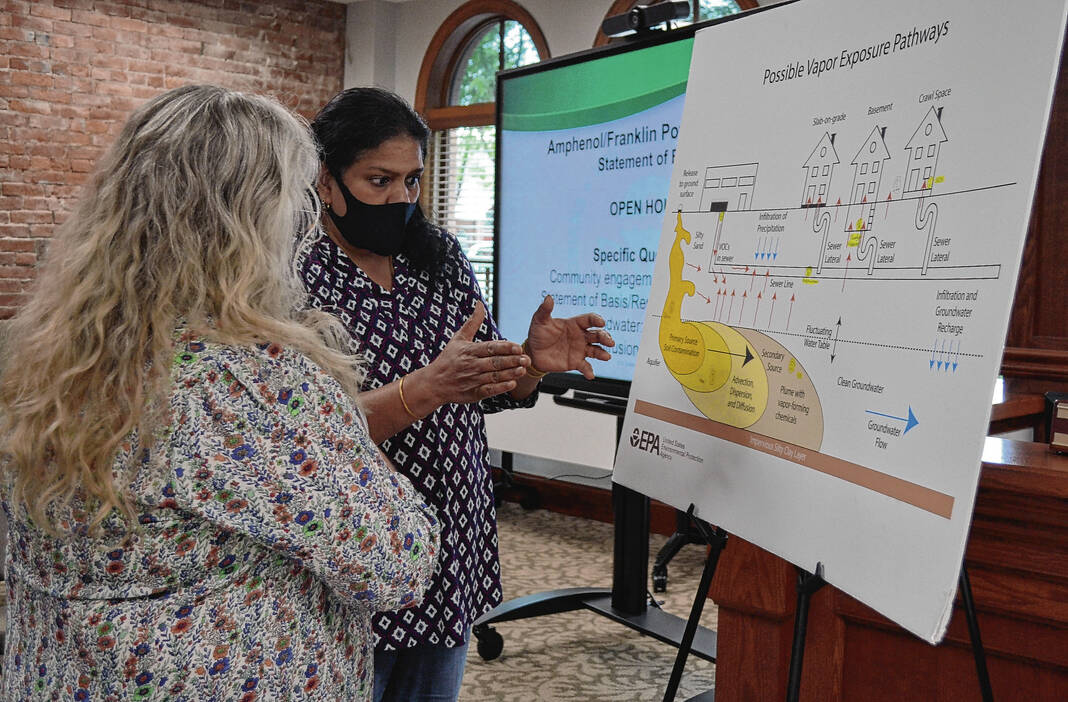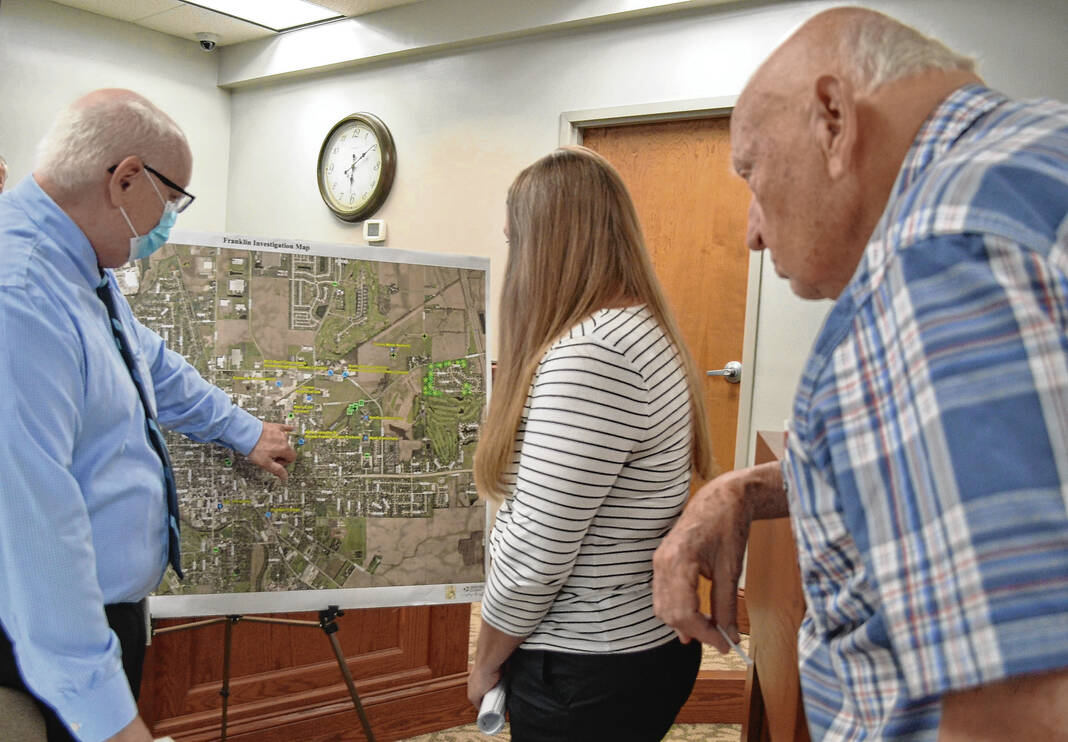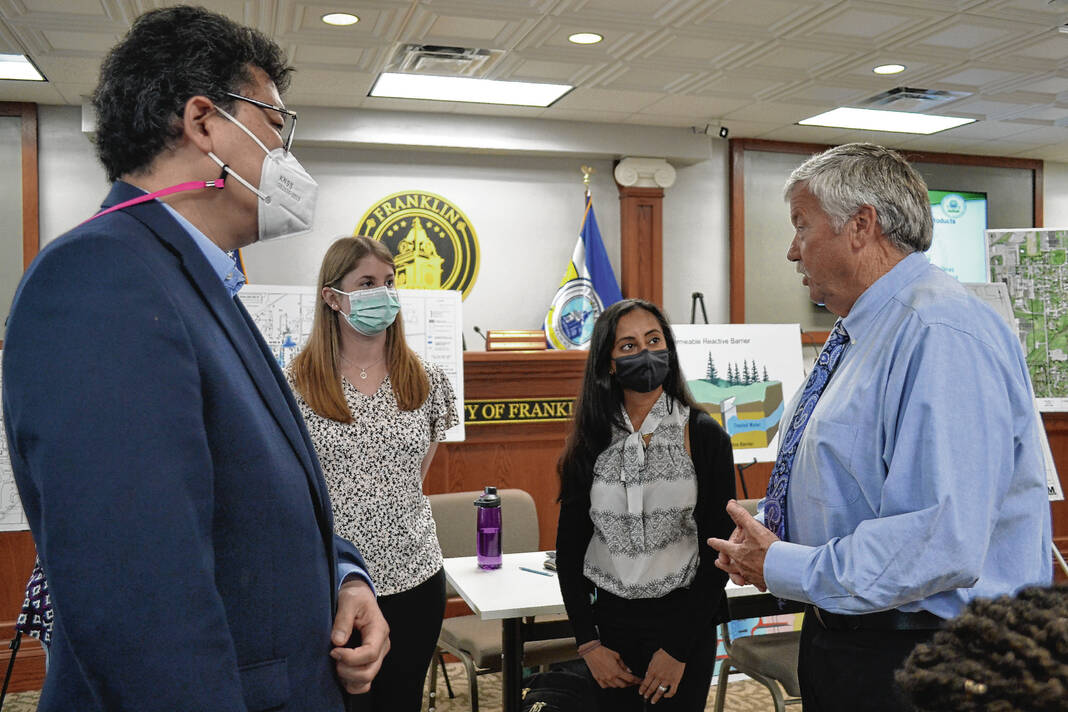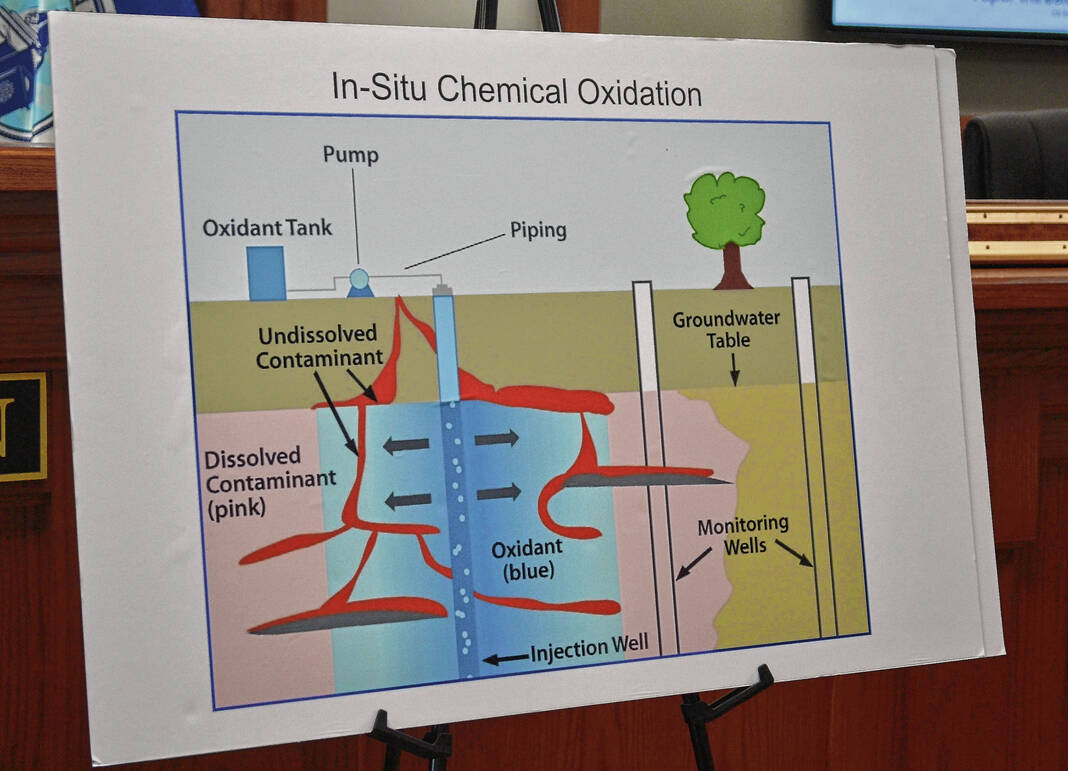If all goes according to the plan, the former Amphenol site could be fully cleaned up in two to three years.
The Environmental Protection Agency presented the final site remediation plan for the Amphenol/Franklin Power Products site Thursday in front of a few dozen people at Franklin City Hall. The agency took questions from the public informally before the meeting and in a formal public comment session, during which one person spoke.
City officials, Johnson County public officials, residents and former residents of the neighborhood near the site, gathered to hear more about the final remedy for the site that has been a concern to residents for years.
The contamination accumulated over 22 years, when Bendix operated at the site from 1961 to 1983. During that period chemicals from plating operations at the site were routed into a sanitary sewer manhole and discharged into the municipal sanitary sewer system. In addition, spills on-site migrated to the soil beneath the building through cracks in the foundation.
This caused volatile organic compounds, or VOC, including trichloroethylene, or TCE, and tetrachloroethylene, or PCE, seeped into the soil and groundwater. These chemicals are known carcinogens. Though children who grew up surrounding the site have been diagnosed with cancer, the state health department says there is no known cause for cancer, so the cases can’t be officially linked to the site.
The contamination was first known to be an issue in 1984, after Bendix was purchased by Franklin Power Products, however no action was taken to clean it up at the time. Three cleanup orders have been initiated at the site since 1990, with the first resulting in a pump and treat system that is still in place at the site.
The most recent order was issued in 2018, after it was revealed there could be additional contamination that was not cleaned up in the previous orders. At the time, people began to speak up about pediatric cancer, which fueled the efforts to ensure the site it fully remediated.
City officials hope the current order to clean-up the site will be the final one. The current order has resulted in further investigation at the site and extensive testing of groundwater and air at the site and within the plume of contamination, or area that the EPA believes the contamination has spread based on testing.
Vapor mitigation systems were installed in homes that tested over screening levels, sanitary sewers that were impacted by the contamination were replaced or relined to seal out contaminants, sewer laterals and/or plumbing systems were also replaced in impacted homes.
The EPA’s final remediation plan includes several methods to clean up the site and long-term monitoring.
In a phased approach, technologies such as In-Situ Chemical Oxidation (ISCO) and In-Situ Chemical Reduction (ISCR) will be used in concert with Permeable Reactive Barriers (PRB) and/or bioremediation. In layman’s terms, these processes are designed to inject reactive chemicals into the ground to break down the contaminants. It is expected that the processes will take two to three years to eliminate TCE and PCE from the contamination area, said Chris Black, the EPA’s corrective action project manager for the site.
The EPA would also monitor both processes to ensure groundwater cleanup goals are reached. Monitoring would take place over the next five to 10 years, until the EPA is confident the area is fully remediated, Black said.
“It is not a leave it alone remedy. We are going to monitor this overtime and we are going to do a statistical method that determines if it is going to meet this goal in a specific amount of time. If it doesn’t we will try another remedy,” Black said. “It is part of a long-term remedy plan – we are not walking away.”
In the short term, these goals will help the EPA get levels below the levels that make vapor intrusion possible. In the long-term, the goal is to eliminate the contamination and to make groundwater in the plume safe to drink again, Black said.
However, Black noted, the groundwater is not used in any homes in the city. The city’s water is safe to drink, as Franklin residents get water from Indiana American Water, which pipes water to the city from a water source in Shelby County.
The processes that the EPA plans to use have been piloted in a smaller area of the site and have proven successful, so far, Black said.
About a dozen members of the public came to the meeting, but only one spoke on the record. Bill Harmening spoke positively of the EPA’s work and said he hopes this plan can finally put the dangerous history of the site in the past.
“I’ve had some friends who lost children. It is just too many – one is too many. I pray that you will never leave any stone unturned until we get this thing right,” Harmening said. “Franklin has a lot of things to offer people and this is kind of a black eye. You people coming here and telling us everything you’re going to do is a breath of fresh air.”
Other members of the public came to get clarity on the current situation at the site and the final remedy. Former Amphenold-area residents Dana Shank and Diana Hendricks came to ask questions about the plan for peace of mind on the chemicals that have caused concerns for so many. Shank was personally impacted because she lost her daughter, Alexa, to pediatric cancer. While Hendricks and her family haven’t experienced health problems, she wanted to make sure the area is clean so she can someday lease the home she still owns in the neighborhood to a new family.
The city of Franklin’s environmental consultant, Casey McFall, senior scientist with EnviroForensics, said in a statement before the meeting that the proposed plan uses proven techniques to reduce contamination.
“This method has been proven to reduce contaminant mass in the subsurface at other chlorinated solvent release sites and if implemented effectively, is very likely to reduce remaining groundwater contaminants in the Amphenol matter,” McFall said, adding that the city would be submitting a formal response to the plan.
News that the site could be remediated in as little as two years, and the EPA’s vow to watch the site until it was fully remediated was good to hear for Mayor Steve Barnett, he said after the meeting.
For years, Barnett has made it his goal to make sure the site is no longer a danger to the public. He hopes to be the last mayor who has to deal with the site, he said.
“This is what we’ve been working for. We heard them say two years, so we are getting closer everyday,” Barnett said. “I’m proud of my administration and how we have a good team here who has stayed on this. We’ve worked with EnviroForensics and we’ve had another set of eyes that’s not governmental eyes – that helps.”
Public comments will be accepted until July 1, reflecting a 45-day period following when the plan was first posted in mid-May.
After the comment period, EPA officials will review the comments and consider them before finalizing the statement of basis plan. The final plan is expected to be posted on or after September 1, following a 60-day review period, Black said.
The full draft plan is outlined in a 75-page document online at the EPA’s Amphenol page and in a YouTube video posted on the EPA Regions channel.
How to comment
Anyone who still wishes to comment can submit comments several ways. All comments submitted by July 1 will be considered, the EPA says.
- By website, directly at https://bit.ly/3kOUikw
- By email to [email protected]
- By confidential voicemail at 312-919-4621
- By mail to Kirstin Safakas at U.S. EPA Region 5 External Communications Office 77 W. Jackson Blvd., EC-19J Chicago, IL 60604-3590
Source: The Environmental Protection Agency










